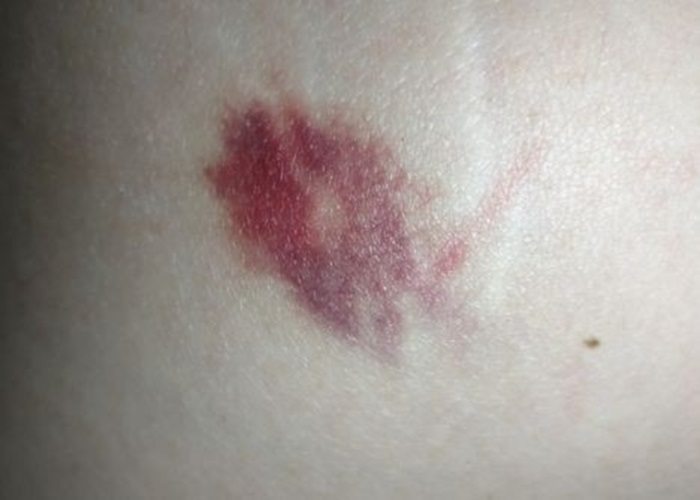A blood clot in the leg, also known as deep vein thrombosis (DVT), is a serious medical condition that requires prompt attention. Detecting a DVT early is crucial for effective treatment and to prevent potentially life – threatening complications such as a pulmonary embolism (a clot that travels to the lungs). There are several methods to help detect a blood clot in the leg, ranging from observing symptoms to using medical diagnostic tools.
Recognizing the Symptoms
Swelling: One of the most common signs of a blood clot in the leg is swelling. The affected leg may become visibly larger than the other, and this swelling can occur suddenly or gradually. The area around the clot usually becomes puffy, and you might notice that it’s more difficult to fit into shoes or put on socks. For example, if you have a DVT in the calf, the calf may feel tight and look swollen compared to the other leg. The swelling is caused by the blockage of blood flow due to the clot, which leads to a buildup of fluid in the surrounding tissues.
Pain or Tenderness: Pain is another significant symptom. The pain can vary in intensity from a mild ache to a severe, throbbing pain. It’s often described as a cramping or pulling sensation. The area around the clot is usually tender to the touch. You might experience pain when you walk, stand, or even at rest. For instance, if you have a clot in the thigh, you may feel a sharp pain when you try to bend or straighten your leg. The pain occurs because the clot is causing pressure on the surrounding nerves and blood vessels.
Warmth: The skin over the area of the blood clot may feel warmer than the surrounding skin. This is due to the inflammation caused by the body’s response to the clot. You can compare the temperature of the affected leg with the other leg by gently touching the skin. The warmth is a sign that the body’s immune system is trying to deal with the abnormal clot formation.
Redness: Redness in the affected area can also be an indication of a blood clot. The skin may turn a reddish or bluish – red color. This discoloration is a result of the disrupted blood flow and the accumulation of blood behind the clot. It’s important to note that these symptoms can sometimes be mild and may be mistaken for other less serious conditions such as a muscle strain or a minor injury.
Medical History and Risk Factors
Personal and Family History: Your medical history plays a crucial role in the detection of a possible blood clot. If you have a history of blood clots in the past, you’re at a higher risk of developing another one. Also, a family history of blood – clotting disorders can increase your susceptibility. Some genetic conditions, like factor V Leiden mutation, can make your blood more likely to clot.
Recent Surgery or Immobility: Having had recent surgery, especially on the legs or pelvis, is a significant risk factor. Prolonged periods of immobility, such as long – haul flights, bed rest due to illness, or being in a cast, can also increase the risk. For example, if you’ve been on a long – distance plane journey and haven’t moved around much, your risk of developing a DVT is higher. The lack of movement allows blood to pool in the legs, increasing the likelihood of clot formation.
Medical Conditions: Certain medical conditions can predispose you to blood clots. These include cancer, heart failure, and autoimmune disorders. For example, cancer can cause the release of substances that promote blood clotting. Hormonal changes, such as those during pregnancy or from taking hormonal contraceptives, can also increase the risk.
Diagnostic Tests
Ultrasound: An ultrasound is the most common and non – invasive test used to detect a blood clot in the leg. It uses sound waves to create images of the blood vessels in the leg. The technician will apply a gel to the skin and move a transducer over the area of concern. The ultrasound can show the presence of a clot by visualizing the blood flow through the veins. If there’s a clot, the flow of blood may be disrupted or absent in the affected area. It’s a painless test and can provide quick results.
Venography: This is a more invasive test. It involves injecting a contrast dye into the veins of the leg and then taking X – ray images. The dye helps to highlight the blood vessels and any clots that may be present. Venography can provide a detailed view of the veins and the clot’s location and size. However, it carries a small risk of complications such as an allergic reaction to the dye or damage to the veins.
Blood Tests: There are also blood tests that can help in the detection of a blood clot. One such test is the D – dimer test. D – dimer is a substance that’s released into the blood when a blood clot is being dissolved. A high level of D – dimer in the blood can suggest the presence of a clot. However, this test is not specific to DVT and can be elevated in other conditions such as inflammation or recent surgery.
Conclusion
Detecting a blood clot in your leg requires a combination of awareness of symptoms, consideration of risk factors, and the use of appropriate medical tests. If you suspect a blood clot based on symptoms such as swelling, pain, warmth, or redness, especially if you have risk factors like recent surgery or a history of blood clots, it’s essential to seek medical attention immediately. Early detection and treatment can significantly reduce the risk of complications and improve your overall health and well – being.
Related topics
The 5 Warning Signs Of A Blood Clot


